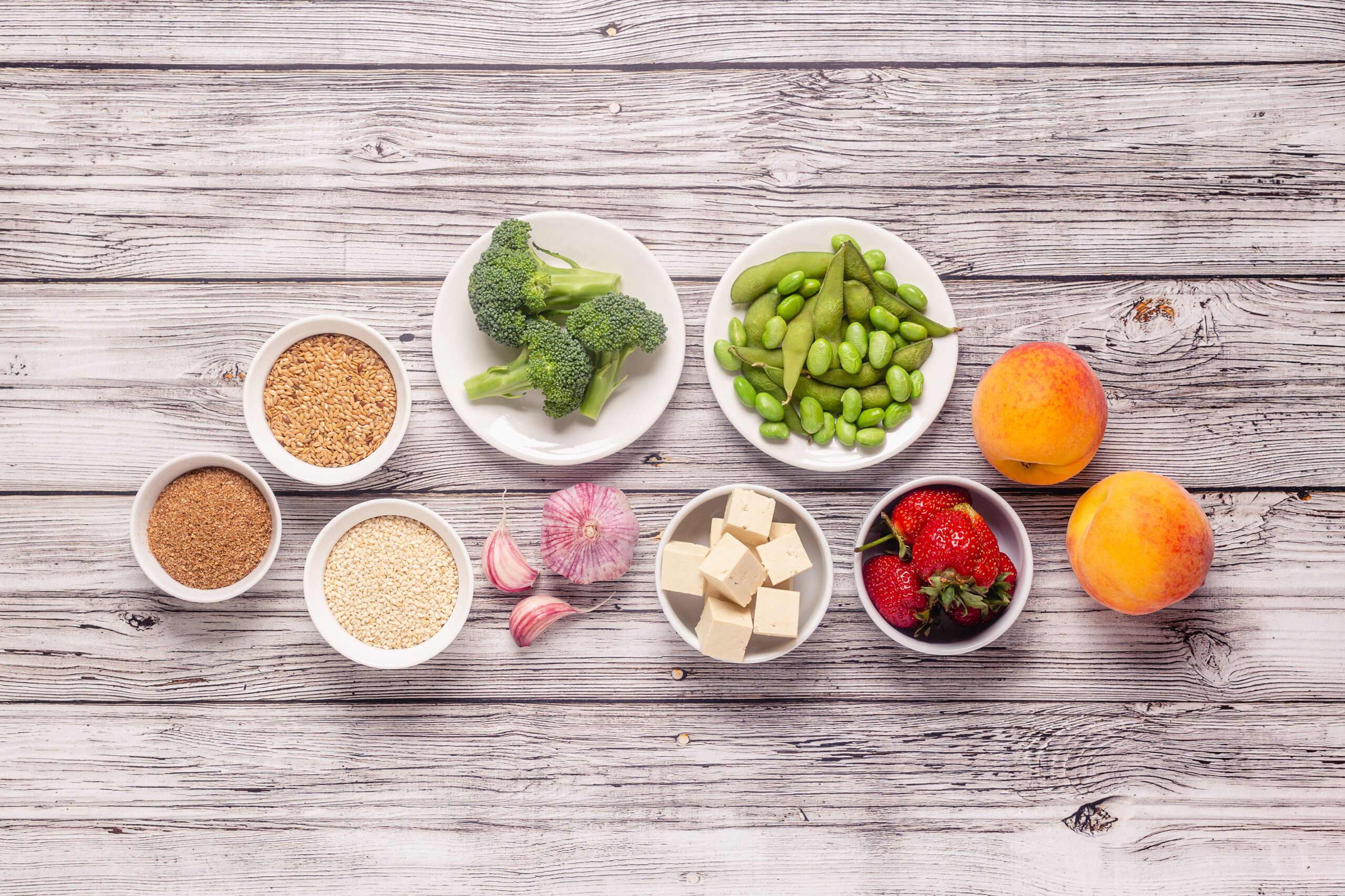Nutrition for Menopause
Menopause is the time in a woman's life where many changes occur. It is the time when a woman’s period stops and it usually occurs naturally, most often after age 45.
Nutrition for Menopause
As the dietitian at Fortius Physiotherapy and Wellness, I would like to explain some of the changes women see in menopause and offer some ideas on how to combat the discomfort than can occur with it. Menopause happens because the woman's ovaries stop producing the hormones estrogen and progesterone. A woman has reached menopause when she has not had a period for one year yet, changes and symptoms can start several years earlier. Symptoms of peri-menopause and menopause include: a change in periods, hot flashes and/or night sweats, trouble sleeping, vaginal dryness, mood swings, less hair on head and more hair on the face as well as weight gain around the abdomen.
The shift in estrogen/progesterone balance during menopause influences:
- Metabolism
- Body composition
- Appetite (including how we feel hunger and fullness)
- Bone Health
- Digestion – bloating/ changes in bowel habits
- Insulin sensitivity (which can influence heart disease and diabetes risks)
- And more...
How to fight negative Impacts of Menopause with Nutrition and Exercise
Nutrition:
Feed yourself adequately to maintain a strong metabolism: restricting calorie intake in an attempt to lose weight can cause your metabolism to slow even further beyond natural age-related decline and can make weight management/ loss even more difficult.
Things to Include:
Calcium and Vitamin D containing foods: menopause can cause an increased risk of bone fractures. Including foods such as dairy products, calcium- fortified foods and dark leafy greens can help to promote bone health/ strength. Additional supplementation of calcium/ vitamin D may be necessary, talk to your Dietitian if you are unsure.
Soy Products: foods with soy act as a phytoestrogen in the body and can help to reduce symptoms of menopause that are associated with the drop in estrogen production. Aim to include 2 or more servings per day of soy products such as tofu, edamame, tempeh, soy milk/ cheese/yogurt etc., if you enjoy them.
Foods Rich in Omega- 3 Fatty Acids: such as salmon, tuna, mackerel, sardines, trout walnuts, ground flaxseeds, chia seeds, hemp seeds, pumpkin seeds, leafy greens, avocado, eggs to help with hormonal changes and mood swings that can be caused by menopause.. Additional supplementation of Omega 3 can be taken if unable to reach requirements via diet. Speak to your Dr. first.
Protein at Every Meal: such as poultry, lean beef, fish, beans/ legumes etc. can help to maintain muscle mass, increase satiety and provide iron for bone health.
Half Plate Fruit and/or Vegetables at Every Meal: incorporating a variety of fruits and vegetables at every meal builds in portion control and ensures that you are getting adequate vitamins, minerals, antioxidants and fibre.
Fibre & Complex Carbohydrates: whole grains reduce the risk of heart disease and improve energy levels throughout the day. Unprocessed carbohydrates are a necessary energy source in your diet and help to support a strong metabolism as well as glycemic control.
Fluids: such as water, herbal tea, oral electrolyte solutions, unsweetened beverages etc. to maintain hydration levels. Symptoms of menopause such as hot flashes and night sweats can potentially increase fluids needs and the risk for dehydration, aim to include ~ 2.2 L per day.
Things to Limit:
Processed Sugars and Refined Carbohydrates = impacts energy levels and glycemic control
- Alcohol = can worsen/ trigger hot flashes and night sweats and provides little nutrition
- Sugar Sweetened Beverages = provides little nutrition while supplying energy (low nutrient- density)
- Spicy foods = can worsen/ trigger hot flashes and night sweats
- Caffeine = can worsen/ trigger hot flashes and night sweats
Exercise:
Focus on getting exercise daily, start with small amounts and work your way up to longer durations over time.
Include weight bearing exercises and resistance training to help prevent the loss of muscle mass, maintain bone mass to prevent Osteoporosis and support a strong metabolism. Choose a weight or resistance level heavy enough to tire your muscles after about 10-12 repetitions. Gradually increase the weight or resistance level as you get stronger.
Incorporate some cardio exercises such as, dancing, biking, cycling, walking, swimming etc. that raise your heart rate.
Work on your mobility, flexibility, stability and balance by doing yoga, stretching etc. to help with functional movement and reduce the likelihood of injury.
Incorporating exercise into your routine can be difficult. Start by trying just 10 minutes. Build the momentum however you can.
Menopause involves big changes. I am here for you and available to help to guide you through changes. If you need any support, advice or guidance, call Fortius Physiotherapy and Wellness and I, Melissa, would be happy to help!
Melissa Hood, RD
Sources:
Nutrition Therapy & Pathophysiology 3rdE,
Dietitians of Canada/ Unlock Food.ca
The North American Menopause Society
The International Menopause Society
The Hormone Health Network

